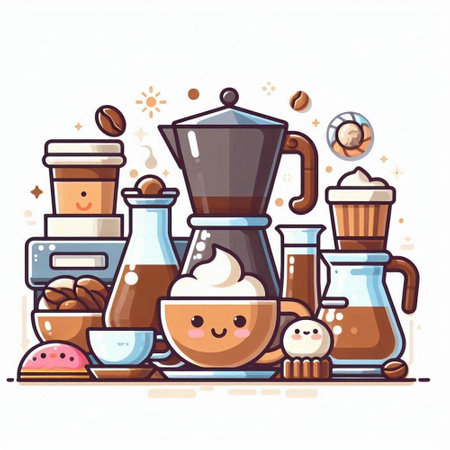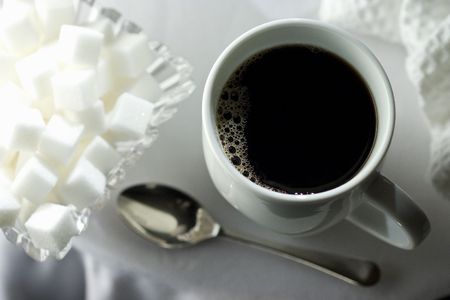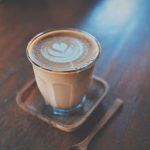1. The Basics of Coffee Profiles
If you want to create a signature roast that stands out in the competitive U.S. coffee scene, understanding coffee profiles is the first step. A coffee profile is essentially a sensory “fingerprint” made up of several core elements: aroma, body, acidity, and flavor. Each of these aspects plays a vital role in shaping how your coffee tastes and how it’s perceived by both seasoned enthusiasts and everyday drinkers.
What Makes Up a Coffee Profile?
| Element | Description | Why It Matters |
|---|---|---|
| Aroma | The scent released from brewed coffee or freshly ground beans—think floral, nutty, fruity, or even chocolatey notes. | A strong aroma draws customers in and sets expectations for flavor before the first sip. |
| Body | The weight and texture of the coffee on your palate—can range from light (like tea) to heavy (creamy or syrupy). | Body affects mouthfeel and can make a cup feel rich and satisfying or light and refreshing. |
| Acidity | The bright, tangy, or crisp quality—often compared to the sharpness of citrus fruits. | Balanced acidity gives coffee its liveliness; too much can be harsh, too little can taste flat. |
| Flavor | The overall taste experience—includes all detectable notes such as caramel, berry, spice, or earthiness. | Diverse flavors help roasters craft unique coffees that attract different customer preferences. |
Why Profiles Matter for Roasters and Consumers in the U.S.
In the American market, coffee drinkers are adventurous but also loyal to their favorites. For roasters, dialing in a precise profile means you can consistently deliver what your customers crave—whether it’s a bright breakfast blend or a bold dark roast for lattes. Meanwhile, consumers use these profiles to navigate the crowded world of specialty coffee. When you clearly define your coffee’s profile, it becomes easier for people to choose your roast over another brand.
How U.S. Preferences Shape Coffee Profiles
Taste trends in the U.S. often lean toward approachable yet distinctive flavors. For instance:
- West Coast: Fruity acidity and lighter bodies are popular with third-wave cafes.
- East Coast: Heavier bodies and nutty or chocolatey notes appeal to traditional palates.
- Midwest/South: Balanced acidity with comforting caramel or cocoa flavors often wins fans.
Key Takeaway: Know Your Audience
Coffee profiles aren’t just technical specs—they’re tools for storytelling and branding in a diverse marketplace. Understanding them helps you connect with your ideal audience and build a signature roast that sells well across America’s ever-evolving coffee landscape.
2. Essential Equipment for Roasting and Profiling
If you want to craft coffee profiles that really stand out in the American market, having the right equipment is key. Let’s break down what you’ll need to get started with roasting and profiling, from heavy-duty machines to the latest software that helps you dial in every batch.
Roasting Machines: The Heart of Every Roast
Your roaster is the backbone of your operation. Choosing the right one depends on your batch size, budget, and how hands-on you want to be. Here’s a quick comparison of some popular options among American roasters:
| Brand/Model | Batch Size | Heat Source | Key Features |
|---|---|---|---|
| Probat P12 | 12 kg | Gas/Electric | Consistent performance, great for medium batches, classic drum style |
| Loring S15 Falcon | 15 kg | Gas (hot air) | Energy efficient, smokeless roasting, advanced profile control |
| Mill City Roasters 3kg | 3 kg | Gas/Electric | User-friendly controls, ideal for small-batch specialty shops |
| Aillio Bullet R1 V2 | 1 kg | Electric (induction) | Compact, precise digital control, great for sample roasting or home use |
Cupping Tools: Taste Matters Most
Cupping is where you judge each roast’s flavor profile. The right tools make this process consistent and reliable. Here are must-haves for any American roasting setup:
- Cupping Bowls: Standard 7-9 oz glass or ceramic bowls—easy to clean and won’t affect flavor.
- Cupping Spoons: Deep-bowled stainless steel spoons designed for slurping and tasting.
- Burr Grinder: Consistent grind size is crucial; Baratza Encore or Mahlkönig EK43 are favorites.
- Tasting Forms: Use SCA (Specialty Coffee Association) cupping forms or digital apps to track notes.
- Kettles & Scales: Gooseneck kettles and precise digital scales for accurate brewing and measurement.
Digital Profiling Software: Data Meets Flavor
The days of “winging it” are over. Top American roasters rely on digital profiling tools to log every detail of their roast curves. These help you repeat your best batches—and tweak the ones that need a boost. Here’s a look at some favorites:
| Software/App Name | Main Features | User Base/Notes |
|---|---|---|
| CROPSTER | Real-time roast logging, curve comparison, inventory management, integrates with most roasters | Loved by pros; robust support and community resources in the US market |
| Artisan Roaster Scope | Open-source, customizable roast monitoring, supports various sensors and devices | A favorite among DIYers and tech-savvy roasters; strong online forums for support |
| Aillio Roast Time App | Bespoke software for Aillio Bullet users; logs temperature curves and profiles automatically | Straightforward and easy for beginners; ideal for smaller operations or sample roasting |
| Sivetz Profile Analyzer | Datalogging paired with airflow/temperature adjustments; helps troubleshoot consistency issues | Niche but valued among experimental roasters wanting more manual control |
Your Next Steps: Build Your Toolkit Smartly
No matter if youre just starting out or scaling up your roasting business in the States, investing in these essentials will help you create signature coffee profiles that keep customers coming back. With the right machine, cupping setup, and digital tools, youll be set up to roast smarter—not harder.

3. Understanding American Palates
To craft signature coffee roasts that truly sell in the U.S., its crucial to understand what American coffee drinkers love—and expect—from their daily cup. American palates are diverse, but certain flavor profiles and trends stand out across regions and market segments.
Regional Flavor Trends in the U.S.
The United States is a big country, and coffee preferences can vary widely depending on where you are. Here’s a quick breakdown of how different regions lean when it comes to coffee taste:
| Region | Preferred Roast Level | Popular Flavor Notes |
|---|---|---|
| West Coast | Light to Medium Roast | Citrus, floral, berry, bright acidity |
| East Coast | Medium to Dark Roast | Nuts, chocolate, caramel, rich body |
| Midwest & South | Darker Roast | Bold, smoky, earthy, low acidity |
| Mountain States | Balanced (Light to Medium) | Fruity, clean, sweet finish |
Consumer Expectations: Specialty vs. Mainstream Markets
Specialty Coffee Lovers
This group is all about unique flavors and transparency. They want traceability—knowing exactly where their beans come from—and are open to adventurous profiles like tropical fruits or floral notes. Equipment-wise, they’re into pour-over gear, espresso machines with precise temperature control, and often grind their own beans for freshness.
Mainstream Coffee Drinkers
Mainstream consumers value consistency and comfort over experimentation. They tend to favor medium or dark roasts with familiar flavors like chocolate or caramel. Most use drip coffee makers or single-serve pod machines at home and expect a smooth, easy-drinking experience every time.
| Coffee Segment | Taste Preferences | Typical Brewing Method | Consumer Expectation |
|---|---|---|---|
| Specialty Market | Bright acidity, fruitiness, floral notes, complexity | Pour-over, French press, espresso machine (manual) | Unique flavors, transparency, freshness |
| Mainstream Market | Smooth body, chocolatey/caramel tones, mild bitterness | Drip brewer, single-serve pod machine (automatic) | Consistency, convenience, easy drinking profile |
How This Shapes Signature Roasts That Sell
If you want your coffee to stand out in the U.S., matching your roast profile to the preferences of your target region or market segment is key. For example:
- If youre targeting California cafes and third-wave coffee shops, consider developing light roasts with citrus or berry notes that highlight origin characteristics.
- If youre selling to diners or grocery stores in the Midwest or South, darker roasts with a bold yet smooth profile will likely perform better.
The right gear and brewing recommendations also matter—offer grind sizes and brewing tips that suit your customer bases habits. By tapping into these regional and consumer expectations, you’ll be able to create signature roasts that not only taste great but also fly off the shelves.
4. Developing Your Signature Roast
Step 1: Choosing the Right Beans
Start by picking beans that reflect the flavor notes American coffee drinkers love. Generally, Americans enjoy a balance of sweetness, acidity, and body—think chocolatey Central Americans, fruity Ethiopians, or nutty Brazilians. Consider your target market: are they adventurous third-wave enthusiasts or classic medium-roast fans? Sourcing high-quality, traceable beans also adds value to your brand.
| Region | Flavor Notes | Popular Appeal |
|---|---|---|
| Central America (Guatemala, Costa Rica) | Chocolate, caramel, citrus | Smooth and approachable; crowd-pleaser |
| Africa (Ethiopia, Kenya) | Berries, floral, winey acidity | Trendy among specialty coffee lovers |
| South America (Brazil, Colombia) | Nuts, cocoa, mild fruit | Classic American breakfast blend profile |
Step 2: Crafting Your Roasting Curve
The roasting curve is the roadmap to your signature flavor. Use a reliable roaster with precise temperature control and data logging. Here’s how to dial in your process:
- Charge Temperature: Start with a moderate charge (between 380°F–410°F) for balanced development.
- Development Time: Adjust the time after first crack. For Americans who like smooth and sweet cups, aim for 15–20% of total roast time in development.
- Rate of Rise (RoR): Keep it steady—not too fast or slow. A declining RoR helps avoid harsh flavors.
- Coffee Color: Use color tracking tools like the Agtron scale to match consumer preferences (medium roast is most popular in the U.S.).
| Roast Stage | Target Temp (°F) | Description / Goal |
|---|---|---|
| Drying Phase | 320–340°F | Remove moisture evenly without scorching beans. |
| Maillard Phase | 340–400°F | Develop sugars; build body and sweetness. |
| First Crack / Development Phase | 400–430°F | Create signature flavors and aromas; monitor closely. |
| End of Roast (Drop) | 410–440°F (for medium) | Aim for desired roast level—often medium for U.S. tastes. |
Step 3: Post-Roast Evaluation & Tuning
This is where you taste and tweak. Always cup your roast within 24 hours and again after degassing for a few days. Look for clarity, sweetness, and whether the profile matches what your customers want—maybe more chocolate for comfort blends or brighter fruit for adventurous sippers. Get feedback from local tasters or staff to ensure broad appeal.
- Cupping: Use SCA protocols to score aroma, flavor, aftertaste, acidity, body, and balance.
- Brew Testing: Test with popular American brewing methods like drip coffee makers and pour-over to see how flavors translate in real-world scenarios.
- Tweak & Repeat: Adjust your roast curve based on results—small changes can make a big difference!
Your Signature Roast Checklist:
- Select beans that match your brand’s identity and American taste trends.
- Create a repeatable roasting curve focused on sweetness and balance.
- Cup every batch and gather feedback until you hit that “wow” factor your customers will crave.
The Payoff: A Profile That Resonates Stateside
Your signature roast should stand out on the shelf but feel familiar in the cup. By following these steps—smart bean selection, careful roasting curves, and honest post-roast evaluation—you’ll craft a coffee profile that not only reflects your vision but also wins over American coffee lovers every morning.
5. Tools and Techniques for Profile Consistency
Maintaining a consistent coffee profile is crucial if you want your signature roast to stand out and keep customers coming back. In the U.S., where specialty coffee shops thrive on delivering reliable flavor experiences, using the right tools and methods can make all the difference. Here’s a breakdown of the best tech and techniques for keeping your roasts steady from batch to batch.
Essential Roasting Equipment
The foundation of consistency starts with your roasting equipment. American roasters often rely on machines with precise controls for temperature, airflow, and drum speed. Brands like Probat, Loring, and Diedrich are popular choices due to their robust build and repeatable settings. Investing in a machine that allows digital input and real-time monitoring is key for repeatability.
Popular Roaster Features in the U.S.
| Feature | Benefit |
|---|---|
| PID Controllers | Accurate temperature control throughout roast |
| Data Logging Ports | Connects to software for detailed tracking |
| Variable Drum Speed | Fine-tunes roast development for unique profiles |
| Touchscreen Interfaces | Simplifies profile adjustments on the fly |
Software Solutions for Data Tracking
Many U.S. roasters use software to ensure every batch matches their signature profile. Popular options include Cropster, Artisan, and RoastLog—these platforms allow you to log temperature curves, rate-of-rise (RoR), and key events like first crack. The ability to overlay past roast data helps pinpoint inconsistencies quickly.
Commonly Used Software in U.S. Coffee Shops
| Software Name | Main Use |
|---|---|
| Cropster | Comprehensive batch tracking and analytics |
| Artisan | User-friendly live graphing for smaller operations |
| RoastLog | Simplified logging with cloud access for teams |
In-Café Feedback Loops
No matter how advanced your tech is, direct feedback from baristas and customers completes the consistency cycle. Many U.S. cafes host regular cupping sessions, inviting staff to taste new batches and document any differences using simple forms or apps. Some even place QR codes on bags so customers can share feedback about freshness or flavor via short online surveys.
Café Feedback Strategies That Work
| Strategy | Description |
|---|---|
| Cupping Forms for Staff | Standardizes notes on aroma, acidity, body, and aftertaste across shifts |
| Customer Survey QR Codes | Makes it easy for drinkers to report on their experience—great for retail beans! |
| Taste Panel Rotations | Keeps multiple palates involved in quality checks over time |
Tying It All Together: The U.S. Approach to Consistency
The combination of high-tech roasting gear, smart software solutions, and active in-café feedback forms the backbone of consistent coffee in America’s most competitive markets. By leveraging these tools and listening to both machines and people, you’ll create signature roasts that stay true to your brand—and keep customers coming back cup after cup.
6. Marketing and Selling Your Signature Roast
Building a Standout Brand for the American Market
To make your signature roast stand out, you need to craft a brand that speaks directly to American coffee lovers. Start by defining what makes your roast unique—is it the origin, the flavor profile, or your roasting technique? Use this as the foundation for your brand story. Americans connect with brands that feel authentic and transparent, so share details about your sourcing practices, your roasting journey, or even your personal connection to coffee.
Key Branding Tips
| Branding Element | Strategy | Example |
|---|---|---|
| Name & Logo | Create a memorable name and logo that reflect your coffee’s personality and values. | “Redwood Reserve” with a tree-inspired logo for earthy, robust blends. |
| Storytelling | Share the story behind your roast—why you chose certain beans, how you roast them, and what experience you want to deliver. | A family tradition of small-batch roasting passed down generations. |
| Sustainability Message | Highlight eco-friendly practices or fair-trade partnerships if applicable. | Packing in compostable bags, direct trade with farmers. |
Packaging That Pops on American Shelves
Your packaging is often the first thing consumers notice. In the U.S., eye-catching designs and clear information are key. Make sure your bags or boxes stand out with bold colors or graphics while keeping details like roast level, tasting notes, and brewing recommendations easy to read. Consider resealable bags for freshness—a feature many American shoppers appreciate.
Packaging Checklist for Success
- Clear Labeling: State the roast level (light, medium, dark), origin, and flavor notes up front.
- Sustainability: Use recyclable or compostable materials if possible.
- User-Friendly Design: Easy-open and resealable features attract repeat buyers.
- Visual Appeal: Invest in professional design that fits your brand identity.
- Brew Guides: Simple icons showing ideal brew methods (drip, French press, espresso).
Connecting with Consumers Through Storytelling
American consumers love to know the “why” behind their purchase. Tell the story of your signature roast wherever you can—on packaging, social media, and in-store displays. Use language that sparks curiosity (“Discover the caramel sweetness of our single-origin Guatemalan roast!”) and invite them into your process with behind-the-scenes photos or videos of roasting days or cupping sessions.
Selling to Retailers: What Matters Most?
If you want to get on local shelves or into cafes, focus on what matters to retailers: consistency, reliability, and support. Provide detailed product sheets with all relevant info (origin, tasting notes, certifications). Offer samples so decision-makers can taste your coffee firsthand. Be prepared to discuss wholesale pricing and delivery logistics—reliable supply builds trust quickly in the U.S. market.
Retail Partner Checklist
- Tasting Kits: Small sample packs for staff training or customer demos.
- Shelf Talkers: Short story cards or signs highlighting your coffee’s unique selling points.
- Point-of-Sale Materials: Branded mugs or stickers for added visibility.
- Coffee Education: Quick guides for staff so they can confidently recommend your roast.
- Punctual Delivery: On-time shipments keep relationships strong with busy retailers.


